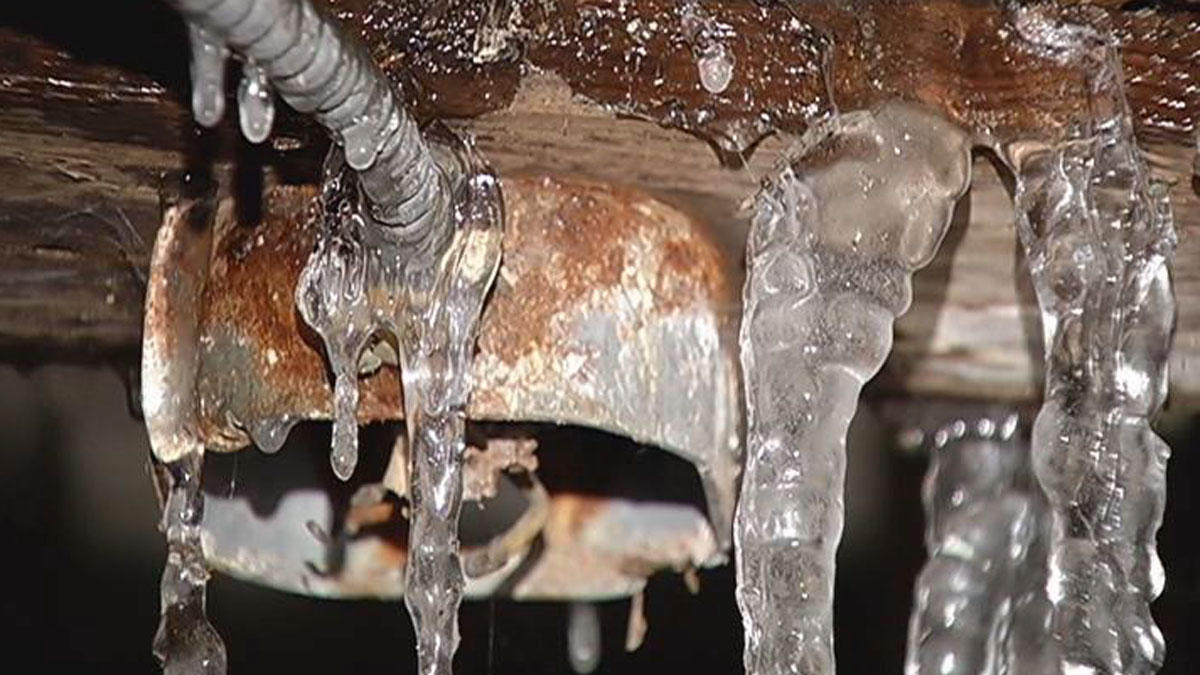Important Tips to Prevent Frozen Plumbing in Winter: Specialist Guidance
Important Tips to Prevent Frozen Plumbing in Winter: Specialist Guidance
Blog Article
Any individual seems to have their own assumption in relation to How To Avoid Freezing Pipes.

Winter can wreak havoc on your plumbing, specifically by freezing pipelines. Here's how to avoid it from occurring and what to do if it does.
Intro
As temperature levels decline, the threat of icy pipelines rises, possibly leading to costly repairs and water damage. Understanding just how to stop icy pipes is important for house owners in chilly climates.
Avoidance Tips
Protecting susceptible pipelines
Wrap pipelines in insulation sleeves or make use of heat tape to protect them from freezing temperature levels. Focus on pipelines in unheated or outside locations of the home.
Home heating techniques
Maintain interior spaces properly heated, particularly areas with plumbing. Open cabinet doors to permit warm air to circulate around pipelines under sinks.
Exactly how to determine frozen pipelines
Search for reduced water flow from taps, unusual smells or noises from pipelines, and visible frost on revealed pipes.
Long-Term Solutions
Architectural modifications
Consider rerouting pipes away from exterior walls or unheated areas. Add extra insulation to attic rooms, cellars, and crawl spaces.
Upgrading insulation
Invest in top quality insulation for pipes, attic rooms, and wall surfaces. Proper insulation aids preserve constant temperatures and lowers the danger of icy pipelines.
Protecting Exterior Plumbing
Yard hose pipes and exterior faucets
Separate and drain yard hose pipes prior to winter. Set up frost-proof spigots or cover outside taps with insulated caps.
Comprehending Icy Pipelines
What causes pipes to ice up?
Pipelines freeze when exposed to temperature levels below 32 ° F (0 ° C) for expanded durations. As water inside the pipelines freezes, it increases, taxing the pipe wall surfaces and potentially creating them to burst.
Threats and damages
Frozen pipes can bring about water system interruptions, residential property damage, and costly fixings. Burst pipes can flooding homes and cause considerable structural damages.
Signs of Frozen Pipes
Determining frozen pipes early can stop them from bursting.
What to Do If Your Pipes Freeze
Immediate actions to take
If you believe icy pipes, maintain taps open up to soothe stress as the ice melts. Use a hairdryer or towels taken in hot water to thaw pipes slowly.
Conclusion
Preventing icy pipes needs proactive actions and fast actions. By comprehending the reasons, signs, and safety nets, property owners can secure their pipes throughout winter.
5 Ways to Prevent Frozen Pipes
Drain Outdoor Faucets and Disconnect Hoses
First, close the shut-off valve that controls the flow of water in the pipe to your outdoor faucet. Then, head outside to disconnect and drain your hose and open the outdoor faucet to allow the water to completely drain out of the line. Turn off the faucet when done. Finally, head back to the shut-off valve and drain the remaining water inside the pipe into a bucket or container. Additionally, if you have a home irrigation system, you should consider hiring an expert to clear the system of water each year.
Insulate Pipes
One of the best and most cost-effective methods for preventing frozen water pipes is to wrap your pipes with insulation. This is especially important for areas in your home that aren’t exposed to heat, such as an attic. We suggest using foam sleeves, which can typically be found at your local hardware store.
Keep Heat Running at 65
Your pipes are located inside your walls, and the temperature there is much colder than the rest of the house. To prevent your pipes from freezing, The Insurance Information Institute suggests that you keep your home heated to at least 65 degrees, even when traveling. You may want to invest in smart devices that can keep an eye on the temperature in your home while you’re away.
Leave Water Dripping
Moving water — even a small trickle — can prevent ice from forming inside your pipes. When freezing temps are imminent, start a drip of water from all faucets that serve exposed pipes. Leaving a few faucets running will also help relieve pressure inside the pipes and help prevent a rupture if the water inside freezes.
Open Cupboard Doors
Warm your kitchen and bathroom pipes by opening cupboards and vanities. You should also leave your interior doors ajar to help warm air circulate evenly throughout your home.

I ran across that piece about 6 Ways to Prevent Frozen Pipes while doing a search on the search engines. You should pause to promote this blog if you enjoyed reading it. Kudos for your time. Revisit us soon.
Quote Report this page